Ce projet vous montre comment implémenter Une solution Glassware qui illustre les principales fonctionnalités de l'API Google Mirror.
Pour voir une démonstration complète du projet de démarrage rapide, accédez à https://glass-python-starter-demo.appspot.com. Sinon, poursuivez la lecture pour savoir comment déployer votre propre version.
Prérequis
SDK App Engine pour Python : Le projet de démarrage rapide Python est mis en œuvre à l'aide d'App Engine. Vous devez le SDK Python App Engine pour développer et déployer votre projet. Exécutez le programme d'installation s'il est adapté à votre plate-forme ou extrayez le fichier ZIP. à un endroit pratique.
Créer une instance Google App Engine
Vous devez héberger le projet de démarrage rapide sur une instance de Google App Engine:
- Accédez à http://appspot.com.
- Cliquez sur Créer une application, puis créez une instance publique Google App Engine hébergée sur
appspot.com. - Attribuez à l'application un identifiant d'application et laissez le champ d'authentification Ouvert à tous les utilisateurs de Google Comptes utilisateur. Vous aurez besoin de l'identifiant d'application ultérieurement pour configurer le projet de démarrage rapide.
Création d'un projet dans la console Google APIs
Ensuite, activez l'accès à l'API Google Mirror:
- Accédez à la console d'API Google et créez un projet d'API.
- Cliquez sur Services et activez l'API Google Mirror pour votre nouveau projet.
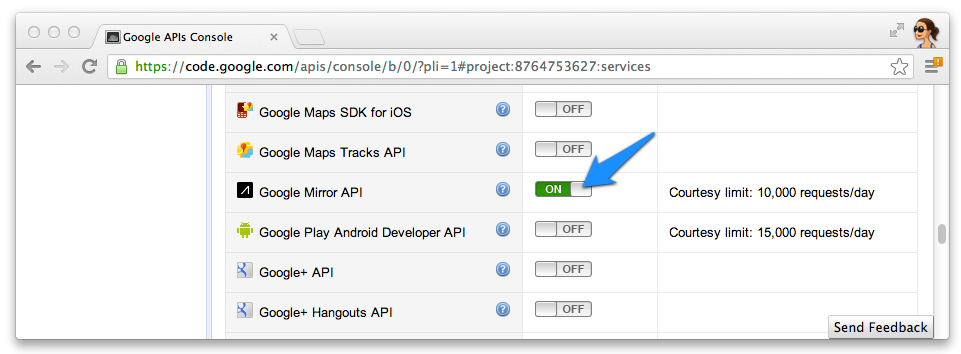
- Cliquez sur Accès à l'API et créez un ID client OAuth 2.0 pour une application Web.
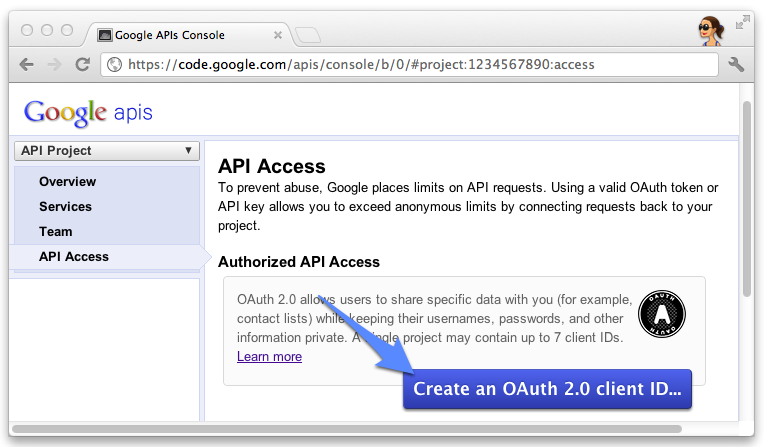
- Indiquez le nom et l'icône du produit Glassware. Ces champs apparaissent sur l'authentification OAuth
à l'écran présenté
à vos utilisateurs.
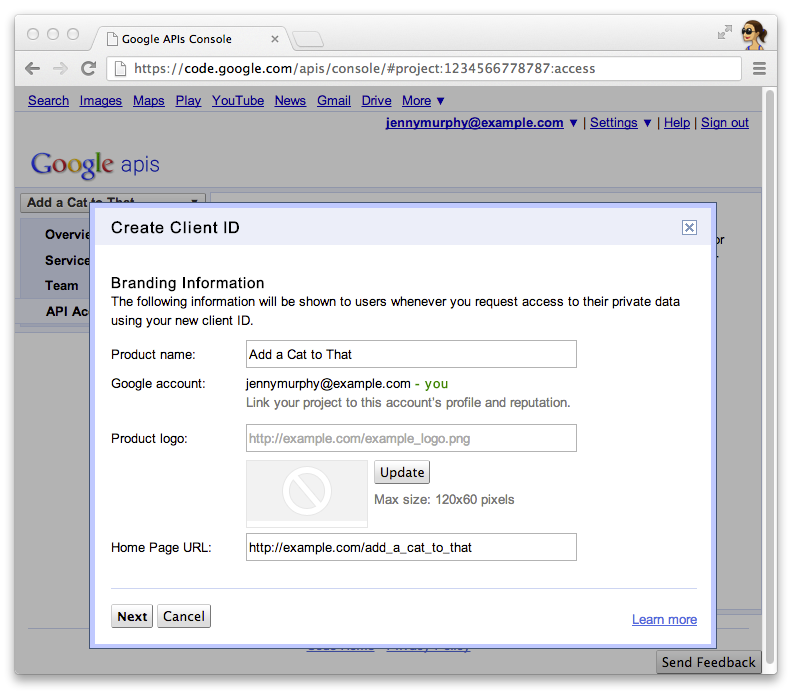
- Sélectionnez Application Web, puis spécifiez une valeur pour le nom d'hôte, par exemple
localhost.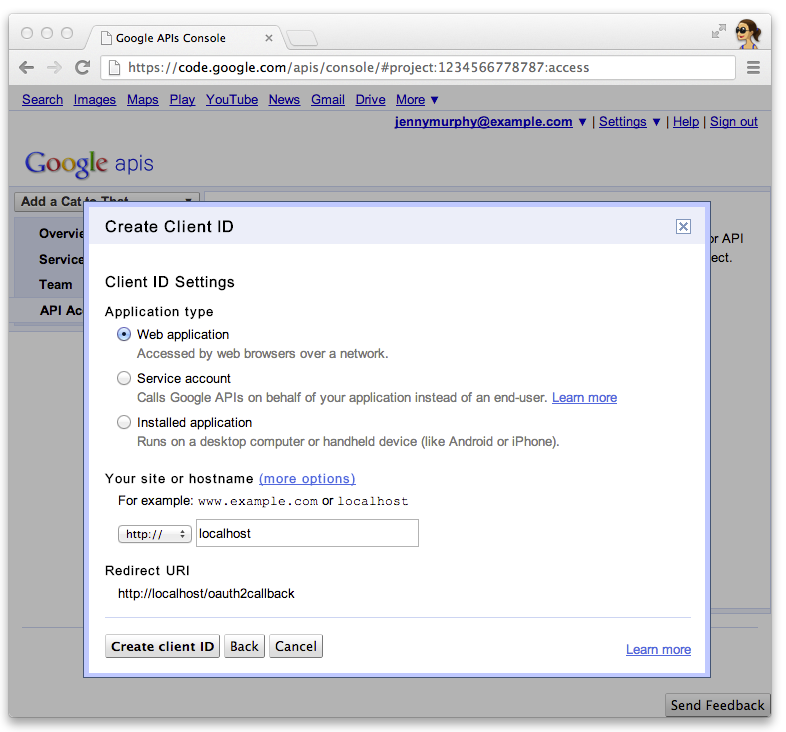
- Cliquez sur Modifier les paramètres... pour l'ID client afin de spécifier les URI de redirection. Préciser
http://localhost:8080/oauth2callbacket l'URL de rappel pour App Engine (par exemple,https://myappengineinstance.appspot.com/oauth2callback).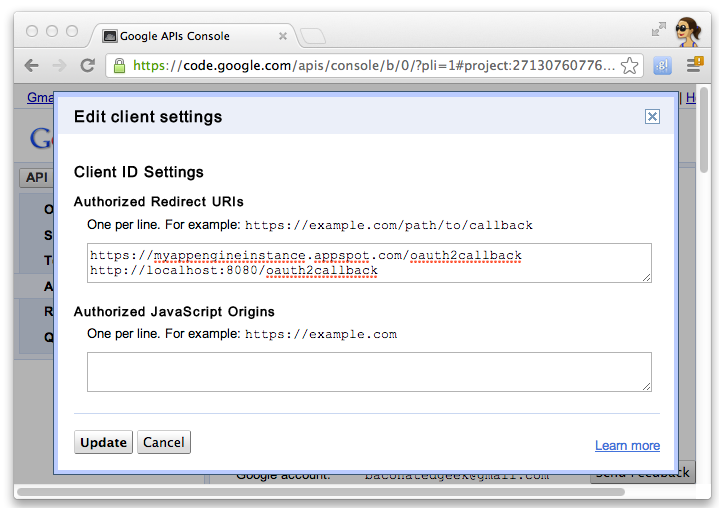
- Notez l'ID client et le code secret à partir de la console Google APIs. Vous aurez besoin des éléments suivants :
pour configurer le projet de démarrage rapide.
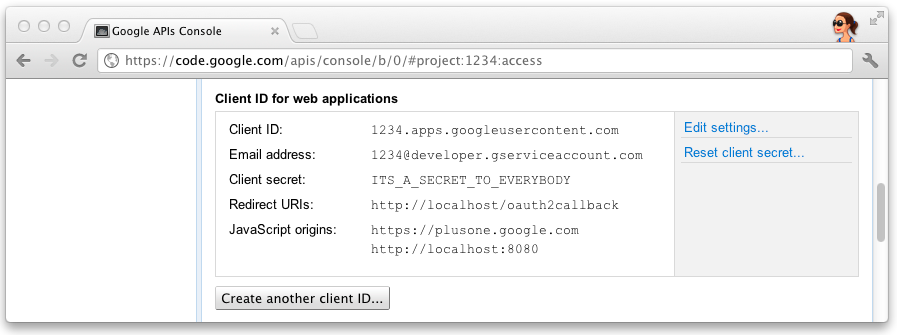
Configurer le projet
Configurez le projet de démarrage rapide pour qu'il utilise les informations de votre client API:
- Saisissez votre ID client et votre code secret dans
client_secrets.json:{ "web": { "client_id": "1234.apps.googleusercontent.com", "client_secret": "ITS_A_SECRET_TO_EVERYBODY", "redirect_uris": [ ], "auth_uri": "https://accounts.google.com/o/oauth2/auth", "token_uri": "https://accounts.google.com/o/oauth2/token" } }
- Générez un fichier
session.secretpour stocker les cookies de session:$ python -c "import os; print os.urandom(64)" > session.secret
- Modifiez
app.yamlpour saisir votre ID d'application App Engine:application: your_app_engine_application_id version: 1 runtime: python27 api_version: 1 threadsafe: true ...
Déployer le projet
Appuyez sur le bouton bleu Déployer dans l'interface de lancement de l'IUG d'App Engine ou exécutez cette interface système. pour déployer votre code:
$ appcfg.py --oauth2 update .

